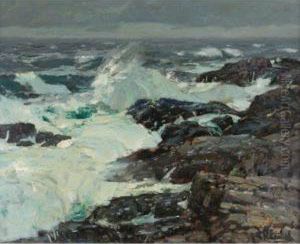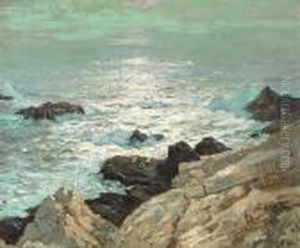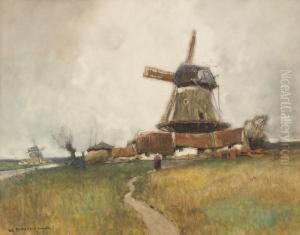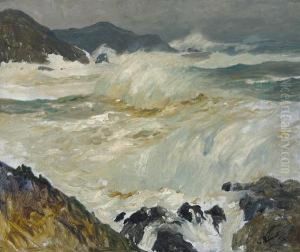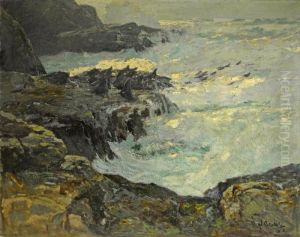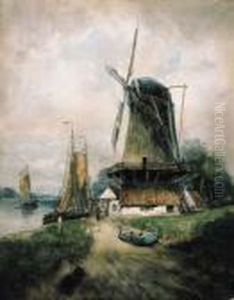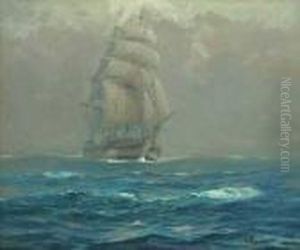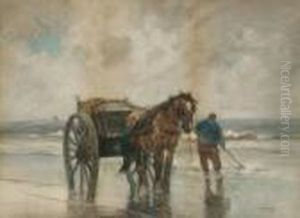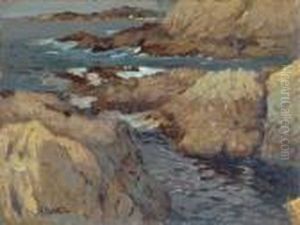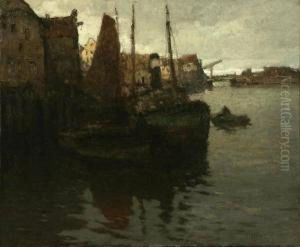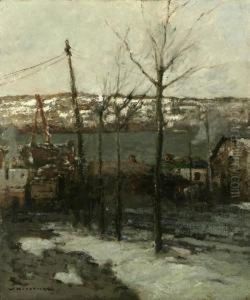William Frederick Ritschel Paintings
William Frederick Ritschel was a notable American impressionist painter born on July 11, 1864, in Nuremberg, Germany. He began his artistic education at the Royal School of Arts in Munich, Germany, before moving to the United States around 1895. Ritschel was particularly captivated by the sea and became known for his marine landscapes, which he executed with a dynamic and vigorous brushwork that captured the movement and essence of the ocean.
After settling in New York, he continued his studies at the Art Students League and soon began to establish himself as a talented artist. Ritschel's travels brought him to Carmel-by-the-Sea, California, in 1901, where he would eventually make his permanent home in 1911. The rugged coastline and the drama of the Pacific Ocean provided endless inspiration for his paintings.
In Carmel, Ritschel built a studio that he called 'Castel a Mare,' and he became a central figure in the local arts community. His work was widely exhibited and received numerous awards, including a silver medal at the Panama-Pacific International Exposition held in San Francisco in 1915.
Ritschel's approach to painting was influenced by the impressionist movement, but he also incorporated elements of naturalism and the then-emerging modernist tendencies. His palette typically involved rich, luminous colors and he often worked en plein air to directly capture the atmospheric conditions of the landscape.
William Frederick Ritschel passed away on March 11, 1949, in Carmel, California. His legacy lives on through his contribution to American impressionism and his evocative paintings of the sea, which continue to be admired for their vibrancy and emotional power. Ritschel's works are held in several prestigious collections, including the Metropolitan Museum of Art in New York and the National Academy of Design.
